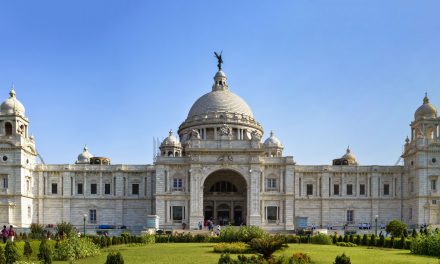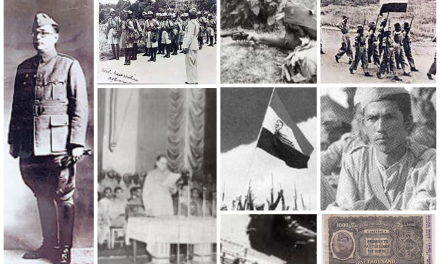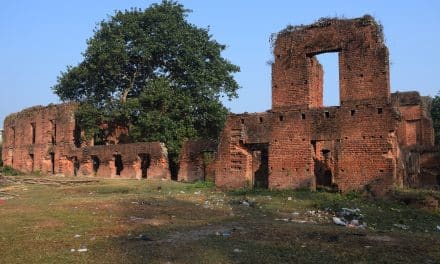To quench the thirst for the independence of the subjugated motherland, thousands of Indians dedicated themselves. Jatindranath Mukherjee was one of those sparkling stars whose birth had a mere motto of nothing but to free his country from the bands of foreign rule. Although Indian history had not justified him as a leading leader of the freedom struggle, he had marked deep through his deeds for his homeland and compatriots behind him. His deeds were fiery evidence that supported him. As a precursor of the Indian freedom struggle, he was successfully able to intromit the fervour of patriotism into every inhabitant, specifically into the youths.
This luminary of India was born in an Upperclass family of Kayagram, a village in Kushtia district of the undivided Bengal, part of present-day Bangladesh, on 07th December 1879 to Umeshchandra Mukherjee and Sharatshashi. Jatindranath had spent five years in his ancestral home at Sadhuhati, P.S. Rishkhali, Dist: Jhenaidah, until his father passed away. Post his father’s demise, his mother had her permanent address in her parent’s home at Kayagram with him and his elder sister, Benodbala(Vinodbala), and they were growing up there.
As remarkable aspects of his nature that he got along with his growing age were physical bravery and incredible strength, charity and cheerfulness. He was a caricature character and was eager to watch and play various roles of god-loving characters oriented with mythology like ‘Prahlad’, ‘Dhruva’, ‘Hanuman’, ‘Raja Harish Chandra’ etc. His mother, Sharatshashi Mukherjee, was a dedicated social worker and a very gifted poet and her affectionate but stern nature. Jatindranath is a man with a strong sense of self-respect that was intromitted into him by his mother in his childhood to be a strong, courageous, and selfless personality.
She tried her best to teach her children about the works of great Bankim Chandra Chattopadhyay and Yogendra Vidyabhushan(Indian Bengali scholar in Sanskrit, thinker, journalist and famous author of biographies), both of who enriched Bengali Literature and Sanskrit respectively with their contributions, and they established an era of their own also. From his childhood, the ‘Bhagavad Gita profoundly influenced Jatin.
Although it is a fact that Jatindranath did not earn a magnificent academic career, he passed the Entrance Examination in 1895 from Krishnanagar A.V. School. He took a course in shorthand with Mr Atkinson, which brought him a job as a stenographer to the government of Bengal. Jatin, in his nature, was a strong and stout young man, and as an efficient employee, he established himself as sincere, honest, obedient and laborious. At the same time, he joined the Calcutta(now Kolkata) Central College(now known as ‘Kshudiram Bose College) to earn the knowledge of ‘Fine Arts’. But he did not continue his course due to his distrust of the colonial education system. Consequently, he left for Muzaffarpore in 1899 for the post of secretary of Barrister Pringle Kennedy, founder and editor of the ‘Trihoot Courrier’.
Swami Vivekananda as his spiritual teacher
Jatindranarh came in touch with Swami Vivekananda, the well-versed philanthropist of the era, when he was a college student, on the occasion of a relief camp organised by Sister Nivedita, the devoted Irish disciple of Swamiji. Sister Nivedita played a crucial role in introducing Jatindranath to Vivekananda and with which he(Jatin) gathered a heap of knowledge from this mystic saint. Swamiji guided Jatindranath with a few remarkable and fruitful pieces of advice which were keenly instrumentals in his revolutionary activities, like assimilating those dedicated youths who were with ‘iron muscles’ and ‘nerves of steel and could immolate themselves to the services of their motherland as well as expand their helping hands to the distressed compatriots during the natural calamities like famines and floods with epidemics also.
Swami Vivekananda had illustrated patriotism not as a mere sentiment or even emotion of love of the motherland but as a passion for serving our fellow citizens. His nationalism was associated with spiritualism as the only religion and character-building through worship. Jatindranath had an immense influence on the spiritual thought of this great patriotic saint of India, especially his vision of a politically independent India which needed the spiritual progress of humanity where Jatin had drafted his free India as a modern, politically free, economically prosperous and spiritually progressive which were far ahead of his contemporaneousness. Struck by Jatin’s enthusiasm for his homeland and the well-being of its compatriots, his potential for being a future revolutionary and overall eligibility for leadership, Swami Vivekananda sent him to the Gymnasium of Ambu Guha to get the knowledge of wrestling. Swamiji motivated Jatin not to discriminate between people based on their social or religious status.
Sister Nivedita, the essential medium to introduce Jatin to Vivekananda, expressed her zeal for him(Jatin) to make Swamiji’s name the rallying point for young India. She also witnessed the craziness of Jatin about him(Swamiji), which encouraged him(Jatin) to serve his native land and its distressed inhabitants. Jatin was wild in his enthusiasm that he soon became part of the Indian group assisting Nivedita in eradicating Colonial British rule from India.
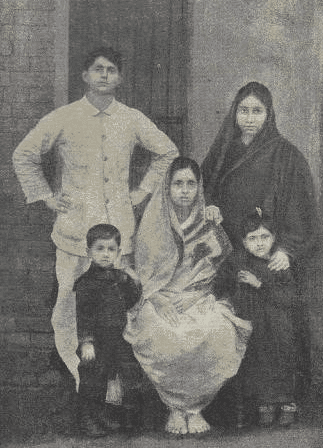
In 1900, Jatin got married to Indubala Banerjee, a girl of Kumarkhali Upazila(subdistrict) in his native Kushtia district; The couple had four children over the next few years. Their eldest son, Atindra, was born in 1903 and completed his life span in 1906. Jatindra Nath was broken-down a lot. With his wife and sister, Vinodbala, he set out for Haridwar on a pilgrimage to revive his inner peace and got initiated by the saint Bholanath Giri there. Serially rest of their children were Ashalata(1907-1976), Tejendra(1909-1989) and Birendra(1913-1991).
Got his nickname ‘Bagha Jatin’
Jatindranath proved his courage, slaying a Royal Bengal Tiger(on heresy a leopard), which Indian history has proudly recorded. After completing of few month’s pilgrimages and returning home to his native village in March 1906, Jatin came to know that a tiger was roaming in the jungle near his village. When he heard of it, he was ready to search for that actual danger and suddenly came across the incarnated horror nearby jungle. The tiger naturally jumped over Jatin, and long wrestling combat continued for three hours. Jatin became wounded but was able to strike the tiger’s neck with his Gorkha dagger(Khukuri) and ended that wrestling combat killing it instantly. Jatin was carrying poison which spread throughout his body from the tiger’s nails. Lt colonel Suresh Prasad Sarbadhikari, an eminent surgeon of British India, took his responsibility to make him cure officiously. Being impressed with his heroic activity, Dr Sarbadhikari published an article about him in the English press. Jatindranath was awarded a silver shield embossed with the moment of him killing the tiger on behalf of the Government of Bengal. Since then, Jatindranath earned his epithet ‘Bagha Jatin(Jatin with the prowess of a tiger)’, which later was added as his nickname to his name.
Influenced by Aurobinda and became a member of the Anushilan Samity
Jatindranath Mukherjee found himself fortunate to be on meeting Sri Aurobinda, already a star among the British Indian revolutionaries, at Yogendra Vidyabhushan’s place in the year 1903. This extraordinary meeting motivated Jatindranath to be his devoted disciple and collaborate with him. Consequently, he(Jatin) was so influenced by Aurobinda to take part in climbing, swimming and shooting in the Akhda(bodybuilding centre). Once again, Jatin’s zest, defiance, undauntedness, dedication, leadership and overall self-immolation keenly impressed Aurobinda. Within a short period, he(Aurobinda) considered him(Jatin) as his(Aurobinda’s) right-hand man. Without hesitation, he(Aurobinda) conferred Jatin to form a ‘secret society’ to train dedicated youths with a reason for a revolution(an armed insurrection all over India) against British rule. This ‘secret society was named ‘Jugantar(Yugantar)’, and Jatin was selected as commander-in-chief. ‘Jugantar’ expanded its body, setting up units across India and Southeast Asia, Europe and America. ‘Jugantar’ repeatedly attacked the British rule to get its destination, which shook its root.
Anushilan Samity
‘Anushilan Samity’ was a Bengali Indian group which encouraged revolutionary actions against the British rule in such a way that enhanced the possibility of ending up the same. It was formed by Satish Chandra Bose in the first quarter of the 20th century, particularly in 1902, with the aims of militant nationalism, including bombings and assassinations of high ranking British officials and their Indian collaborators. It was led by the nationalists Aurobinda Ghosh and his brother, Barindra Kumar Ghosh. Jatindranath Mukherjee was one of the possible founders of the ‘Anushilan Samity’ during his student years in Calcutta(Kolkata). The ‘Anushilan Samity’ started its wend with the influence of the ‘Hindu Shakta philosophy.’
The implication of the Alipore Bomb Case and the Howrah-Shibpur Conspiracy Case
A revolutionary conspiracy was hatched to kill the Chief Presidency Magistrate, D.H.Kingford of Muzaffarpur in India in the year 1908. Jatindranath Mukherjee, with over thirty revolutionaries, was implicated in this case which was formally known as ‘Emperor versus Aurobinda Ghosh and others’. Exactly 49 people were accused; the police had produced 206 witnesses, 400 documents and more than 5,000 exhibits in the court. After a lengthy trial of one year, the judgement was finally delivered by Judge Beachcroft on 06/05/1909, in which Barindra Kumar Ghosh was exiled for life. Many other co-conspirators from the secret society, ‘Jugantar(Yugantar)’, were sentenced to imprisonment in the Cellular Jail, Anushilan Samity was declared illegal and banned, and finally, Jatin and Naren(Manabendra Nath Roy) were acquitted for want of evidence.
In contrast, four accused were already martyred on the gallows by 1909, and some others died in the actions. But very soon, Jatin was arrested again, including 46 Bengali Indian nationalists of the ‘Anushilan Samity in connection with the ‘Howrah-Shibpur Conspiracy’ case, also known as the ‘Howrah Gang Case’. The trials proceeded in the resurrection of the murder of Inspector Shamsul Alam on 24/01/1910 in Calcutta(now Kolkata). Jatin, including others, was convicted due to a lack of proper evidence and spent 11 months in Howrah jail. They were brutally tortured, some died of their wound, and some became mentally challenged. After completion of trials, Jatin was acquitted and released from jail in February 1911 but was dismissed from his service.
Armed struggle against the British Raj and promise of assistance by German nobility
During their imprisonment in the Howrah jail, Jatin and Naren(Manabendra Nath Roy) thought of a long-term programme. The ‘British Raj’ would be only overpowered through an armed struggle. According to their planning, they took the initiative to unify different groups of patriots and were successful. Not only that but they were bolded to organise the Indian revolutionaries residing outside India also. Such an organisation, ‘Ghadar Party by name, was founded in San Francisco on 15/07/1913 under the leadership of Har Dayal with Sohan Sing Bhakna as its president. It was a multi-ethnic party formed to eliminate the colonial super-power employing an armed struggle and set up a national democratic government on the sub-continent. Before the ‘Ghadar Party’ was founded in 1912, Jatin was able to get the promise of the German Crown Prince during his visit to Calcutta(now Kolkata) about firearms, armaments supply, and financial support to form a socialist government in India.
On the other hand, in 1914, World War I broke out. At that time, the Indian revolutionaries of Europe concentrated in Berlin, Germany’s capital city, to form the ‘Indian Independence Party’ and sought German assistance, and the German government agreed with them. The ‘Indian Independence Party’ sent an agent to Jatin to negotiate with the German Consul General in Calcutta.
As Jatin was under British surveillance, it was hard for him to carry on his revolutionary activities from Calcutta. So, he had to flee from Calcutta. He chose Odisha, and his four fellow followers named Chittapriya Roychowdhury, Nirendranath Dasgupta Manoranjan Sengupta and Jyotish Chandra Paul for a particular reason. They reached Mahulidiha village of Kaptipada block in Odisha’s Mayurbhanj district, adjacent to Balasore dist. Jatin’s key lieutenant, Naren(M.N.Roy), left India for German armaments expected somewhere in the Pacific.
Battle of Balasore
Jatin and his followers had taken shelter at Kaptipada due to receiving the shipment loaded with arms from Germany at Balasore Coast. Unfortunately, this consignment was intervened only because of E V Voska, a Czech spy who leaked the entire strategy to the British Army Intelligence at a high price and for that, ‘Queen Maverick(German ship)’ never reached India’s east coast. The British Police force sealed the east coast as well as they chased Jatin and his followers to Kaptipada, but Nationalists within the police informed Jatin about the British raid. Jatin and his associates left the place before the force had appeared there. Jatin and his followers found their new destination, Balasore. A large number of British police personnel, headed by then-police Commissioner of Bengal, Charles Tegart and empowered by an army unit from Bhadrak’s Chandbali, rushed to the revolutionaries at the hamlet of Chasakhand in the Balasore suburb. The gunfight started and continued for two hours. As a result, both parties had to face massive casualties. Jatin was severely wounded and passed away the next day at the age of 35 at Balasore Hospital. Chittapriya Roychowdhury died on the spot. Another two associates, Manoranjan Sengupta and Niren Dasgupta, were captured and imprisoned in Balasore jail. Jyotish Chandra Paul, Jatin’s follower, was deported to the dreaded Andaman jail.
Though the Hindu-German plot failed, Bagha Jatin and his followers’ immolations expedited the following part of the struggle against the British Raj.
Though the British Raj had a compulsion to avert Jatin, they paid a great homage to him for his selfless political works and driving power. Top colonial official Charles Augustus Tegart once told his colleagues, “If Bagha Jatin were an Englishman, then the English people would have built his statue next to Nelson’s at Trafalgar Square.”
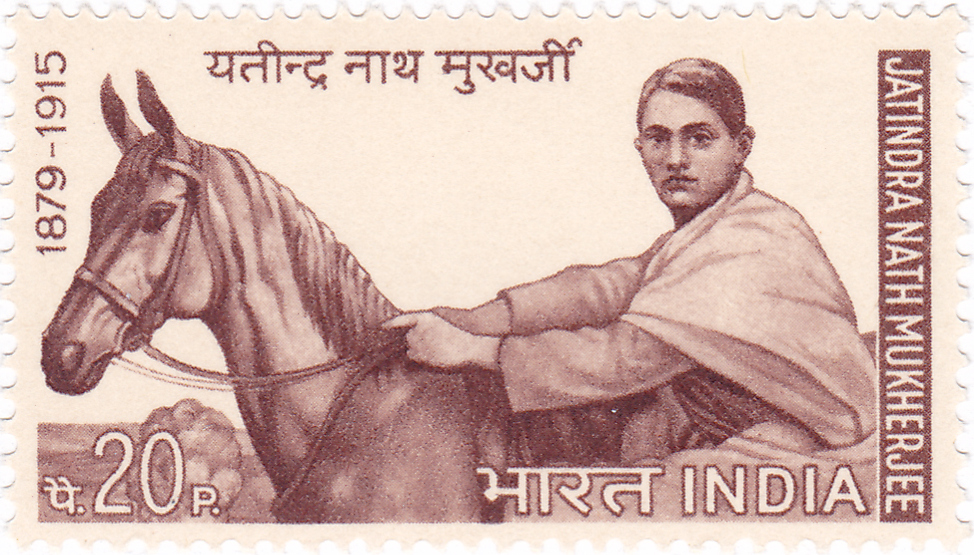
Main image courtesy : West Bengal state archives



